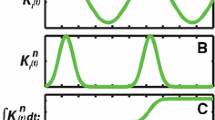Abstract
In can be postulated that fatigue crack does not grow if no damage occurs in the vicinity of the crack tip. Damage may occur beyond the Re-tensile Plastic zone's Generated load (RPG load) in the vicinity of a crack tip under loading process. We propose an effective stress intensity factor range (Δ K RP) corresponding to the period in which the re-tensile plastic zone appears, in place of ΔK eff proposed by Elber [1], for a fatigue crack propagation parameter.
We then consider the small change of compliance for a cracked body under cyclic loading, for the purpose of measuring RPG load as well as crack opening load and crack closing load. Moreover a subtraction circuit which can measure the small change of compliance during fatigue test is developed and an automatic controlled system which can control the adequate values of resistance in the circuit and the output voltage range from strain amplifiers for minimizing relative noise level is also developed. Then fatigue crack propagation tests of CT specimens were carried out with various stress ratios of constant amplitude loadings. Moreover ΔK th tests with the conditions of constant stress ratio and constant maximum load with increasing stepwise minimum load were also carried out. It becomes clear that the logarithmic curve of ΔK RP—crack propagation rate appears to be linear in a wide range from the region of very slow growth rate to the region of stable growth rate. On the other hand, threshold phenomenon appears only circumstantially due to the particular loading pattern on ΔK eff based on the crack opening load and ΔK eff cl based on the crack closing load. Moreover ΔK RP gives the quantitative effect of stress ratio on fatigue crack propagation rate.
Similar content being viewed by others
References
W. Elber, ASTM STP 486 (1971) 230–242.
M. Kikukawa, M. Jono and Y. Kondo, Transactions of the Japan Society of Mechanical Engineers A 47–417 (1981) 468–482, in Japanese.
D. Chen and H. Nishitani, ASTM STP 982 (1988) 475–488.
M. Kikukawa, M. Jono, K. Tanaka and M. Takatani, Journal of the Society of Material Science 25–276 (1976) 899–903, in Japanese.
ASTM E647–81, Standard Tests Method for Constant Load Amplitude Fatigue Crack Growth Rates above 10−8 m/cycle (1981).
J.E. Srawley, International Journal of Fracture 12 (1976) RCR 475–476.
I. Le May and S.K.P. Cheung, Fatigue '84 Vol. II, EMAS (1984) 677–686.
Author information
Authors and Affiliations
Rights and permissions
About this article
Cite this article
Toyosada, M., Niwa, T. The significance of RPG load for fatigue crack propagation and the development of a compliance measuring system. Int J Fract 67, 217–230 (1994). https://doi.org/10.1007/BF00016261
Received:
Accepted:
Issue Date:
DOI: https://doi.org/10.1007/BF00016261



